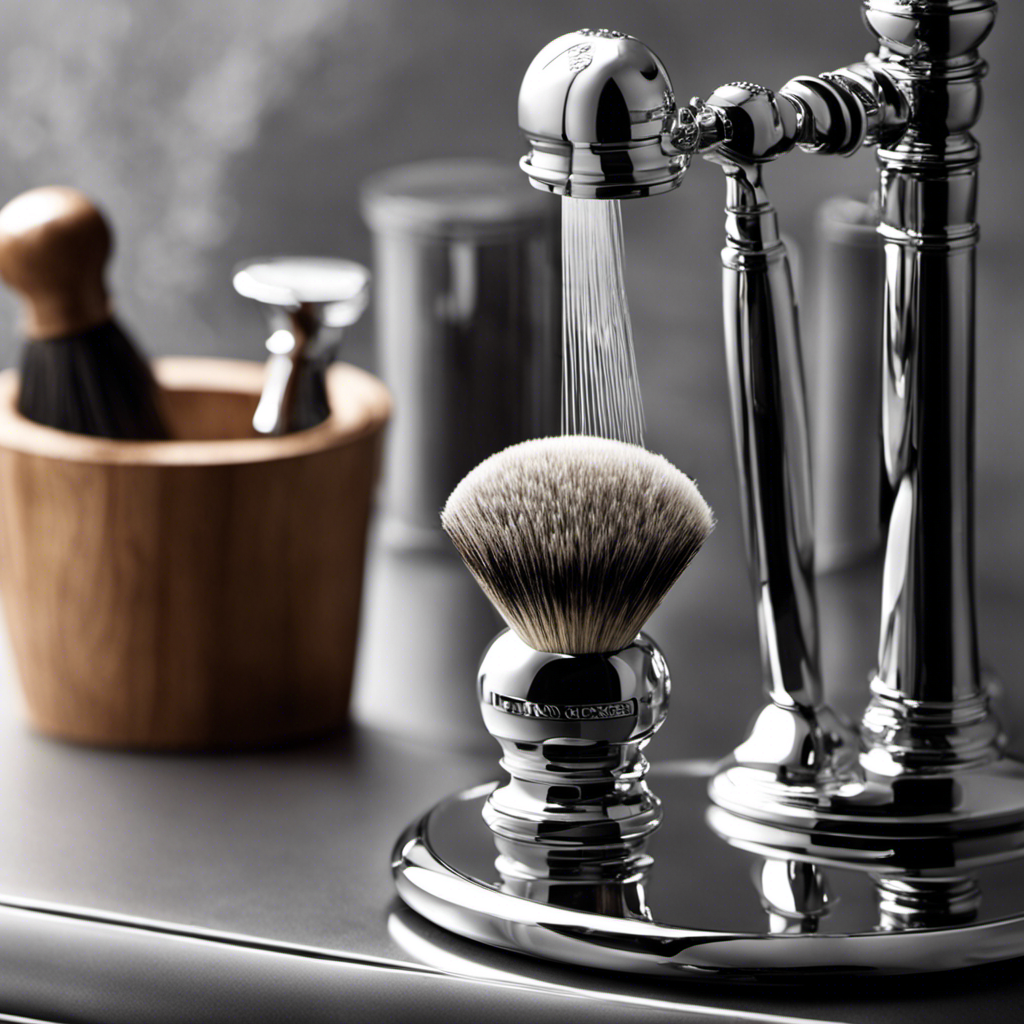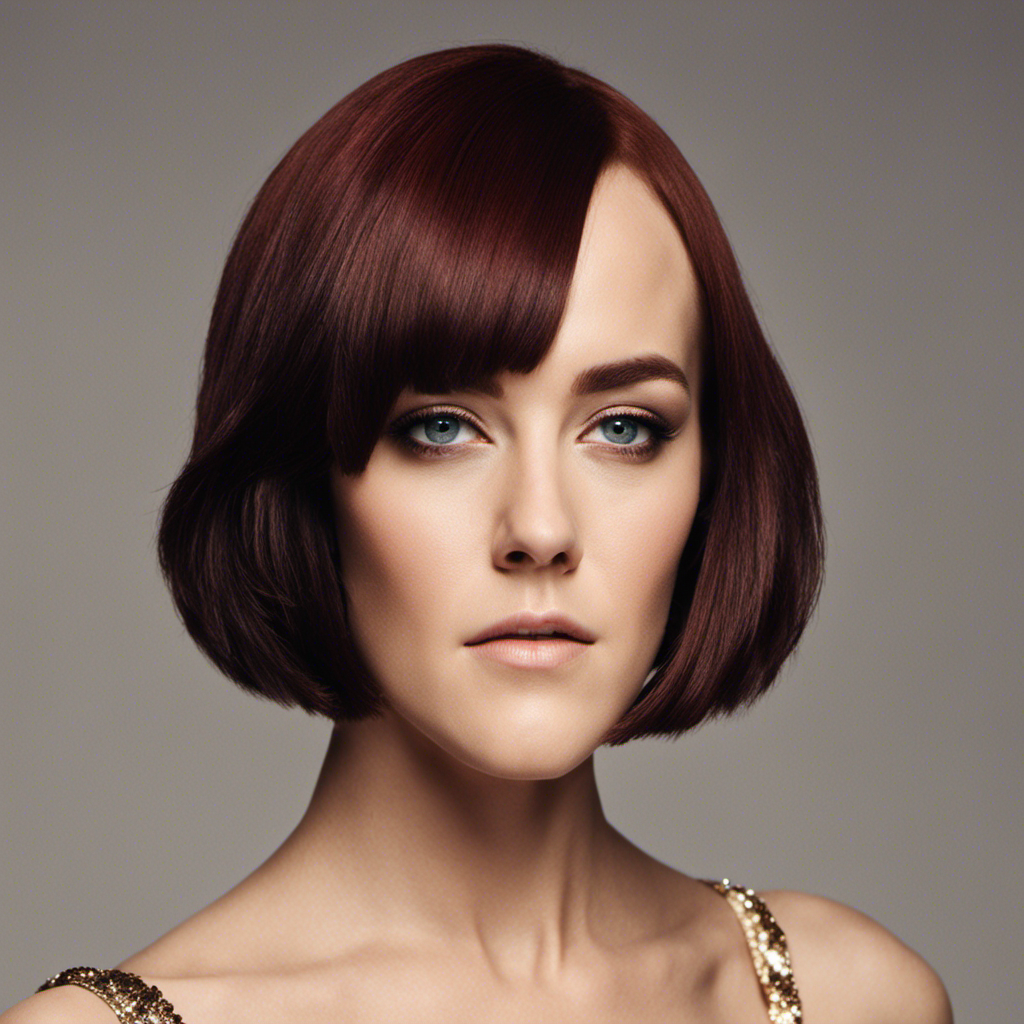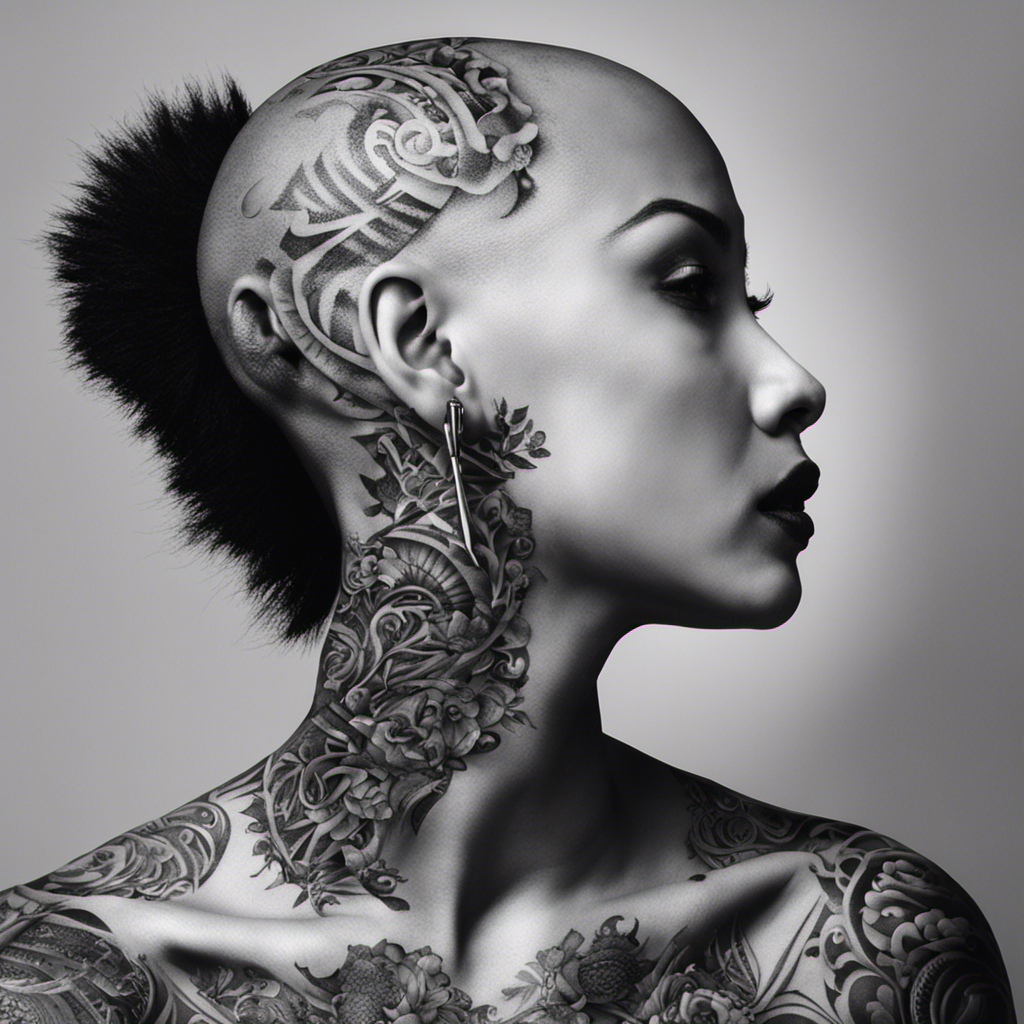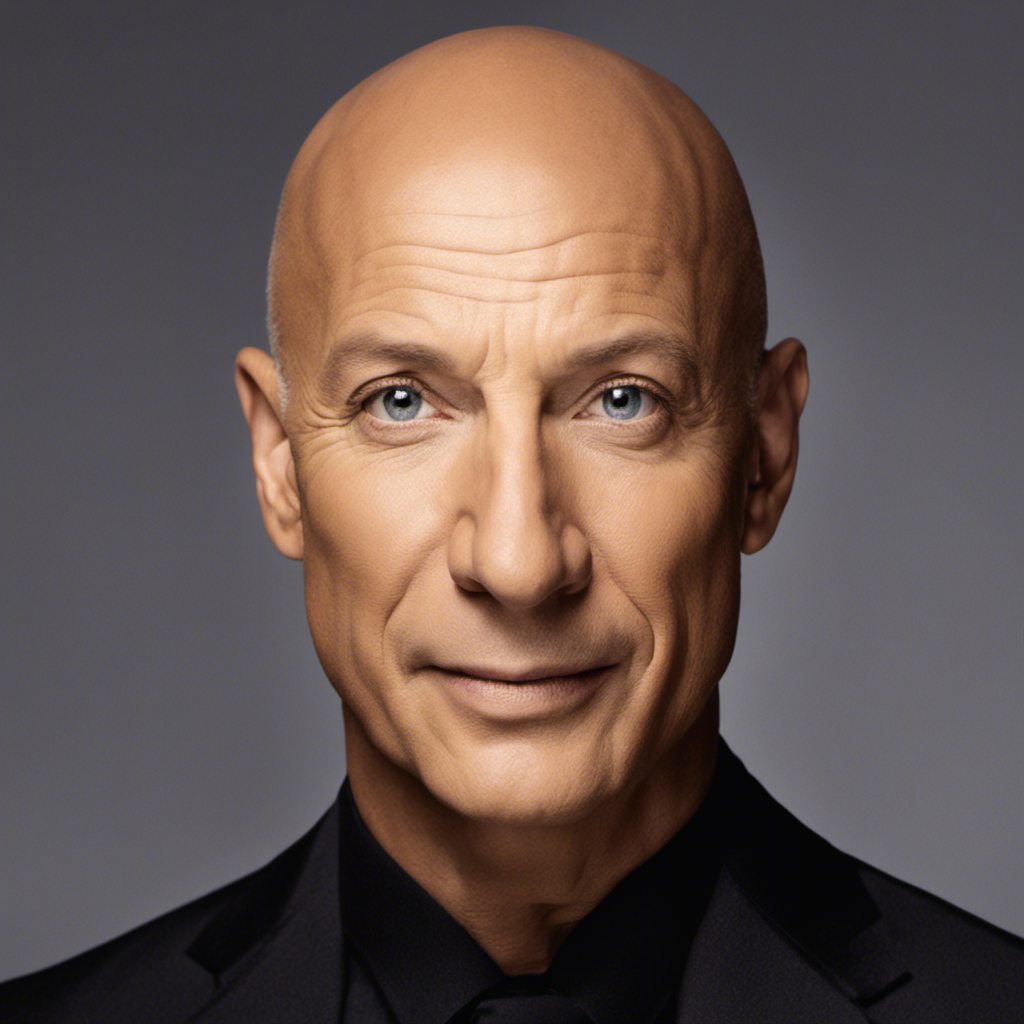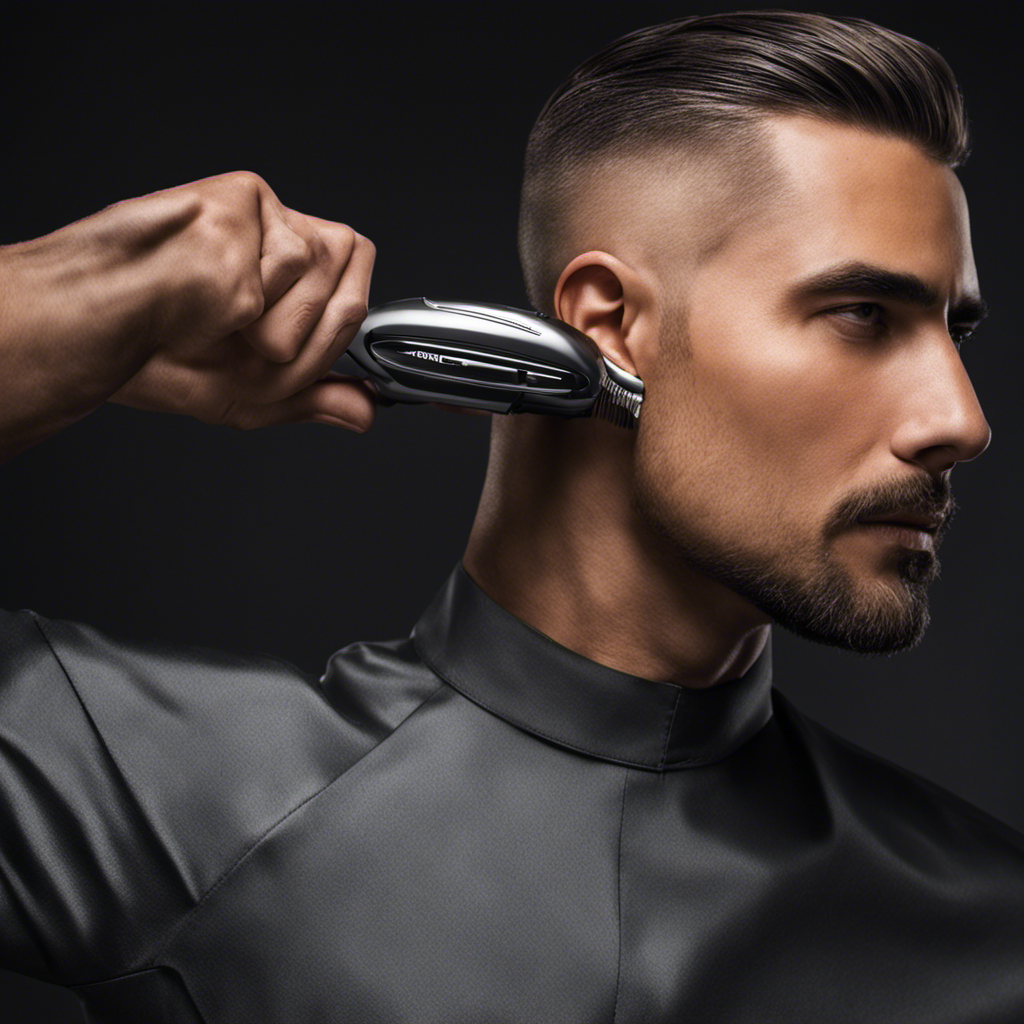Safety and Precautions
Reddit How to Shave Head
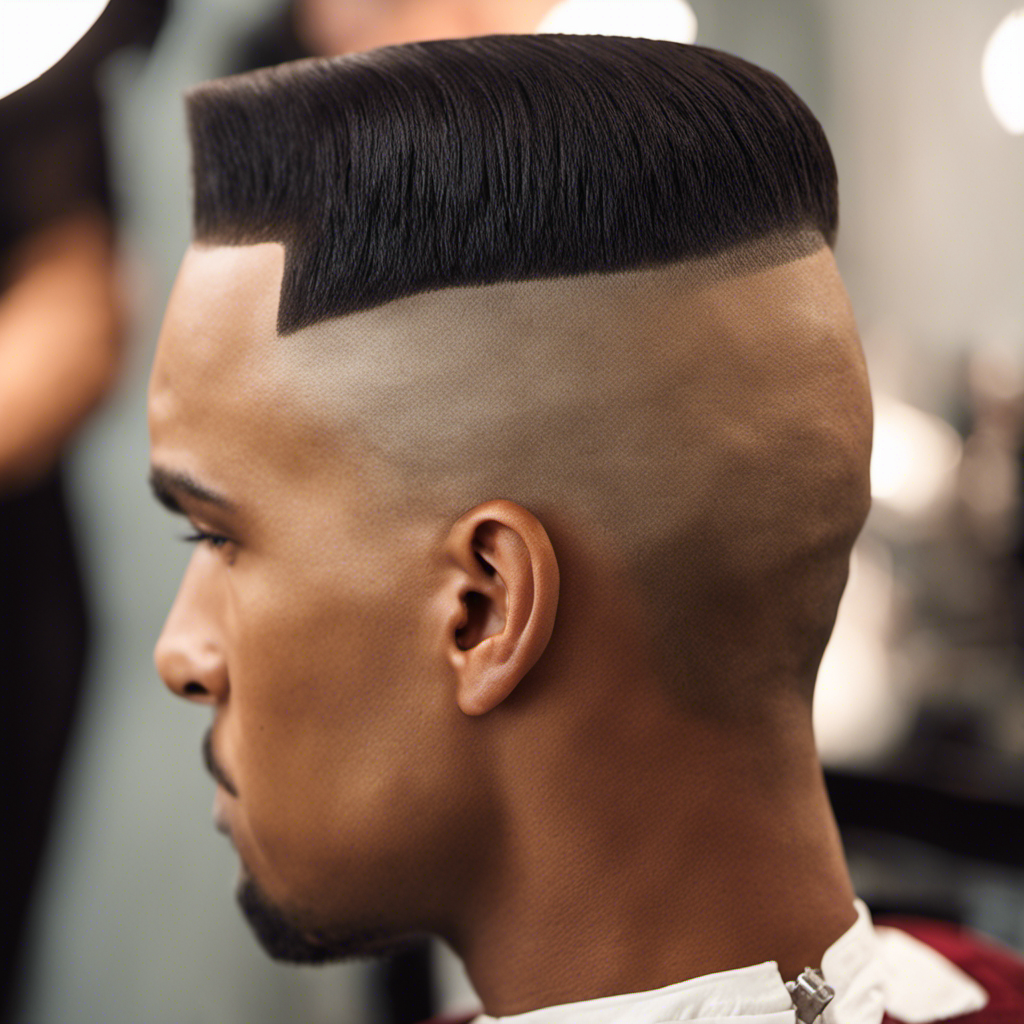
Hey there! Were you aware that shaving your head is becoming more and more popular? Recent surveys show that an increasing number of individuals are choosing to embrace the bald look.
If you’ve been considering shaving your head and want some practical tips and tricks, you’ve come to the right place. In this article, I’ll be sharing my personal experiences and insights from the Reddit community on how to shave your head like a pro.
So, let’s dive in and discover the secrets to a smooth and stylish shaved head!
Key Takeaways
- Properly moisturize and exfoliate your scalp before shaving to create a smooth surface for the razor to glide on and reduce the risk of irritation and ingrown hairs.
- Use a razor designed for shaving the head with multiple blades and a pivoting head for a close and precise shave.
- Protect your scalp from the sun by choosing a sunscreen with a high SPF rating, applying it generously, and reapplying every two hours or after sweating or swimming.
- Follow proper shaving techniques such as shaving in the direction of hair growth, using short and gentle strokes, and rinsing the razor frequently to avoid clogging. Also, moisturize the scalp after shaving to prevent dryness and flakiness.
Preparing Your Scalp
First, you’ll want to make sure you’ve properly moisturized and exfoliated your scalp before shaving.
Exfoliating your scalp has many benefits. It helps remove dead skin cells, which can clog hair follicles and lead to scalp issues like dandruff. By exfoliating, you can also stimulate blood circulation, promoting healthier hair growth.
There are various scalp massage techniques you can use to exfoliate your scalp. One technique is to use your fingertips to gently massage your scalp in circular motions. This helps to loosen any buildup and increase blood flow. Another technique is to use a scalp brush with soft bristles to gently scrub your scalp. Remember to be gentle and not to apply too much pressure.
Overall, properly moisturizing and exfoliating your scalp before shaving helps to create a smooth and clean surface for the razor to glide on, reducing the risk of irritation and ingrown hairs.
Choosing the Right Shaving Tools
To ensure a smooth shave, you’ll want to start by selecting the right tools for the job. Here are some important considerations for scalp care and razor selection:
-
Scalp Care: Before shaving, make sure your scalp is clean and moisturized. This will help prevent irritation and razor burn.
-
Razor Type: Choose a razor specifically designed for shaving the head. Look for features like multiple blades and a pivoting head for a closer and more comfortable shave.
-
Blade Sharpness: Opt for sharp blades to minimize tugging and pulling. Dull blades can cause irritation and ingrown hairs.
-
Shaving Cream: Use a high-quality shaving cream or gel to create a smooth surface and protect your scalp from nicks and cuts.
By following these scalp care tips and selecting the right razor and shaving products, you’ll be well on your way to a successful shave.
Now, let’s move on to the next section and learn about proper shaving technique.
Proper Shaving Technique
Now, let’s delve into the best way to achieve a smooth shave by focusing on proper shaving technique. When it comes to shaving your head, it’s important to take care of your scalp and prevent razor burn. Follow these steps for a comfortable and effective shave:
-
Prepare: Start by washing your scalp with warm water and a gentle cleanser to remove any dirt or oils. This will soften the hair and open up the pores.
-
Lather Up: Apply a generous amount of shaving cream or gel onto your scalp. Make sure to use a product that is specifically designed for sensitive skin to minimize the risk of irritation.
-
Shave: Use a sharp razor with multiple blades for a close shave. Start at the front of your head and move towards the back in smooth, gentle strokes. Rinse the razor frequently to prevent clogging.
-
Moisturize: After shaving, rinse your scalp with cool water to close the pores. Pat dry with a clean towel and apply a moisturizer or aftershave balm to soothe the skin and provide hydration.
By following these techniques, you can achieve a smooth shave while taking care of your scalp and finding relief from razor burn.
Now, let’s move on to the next section to learn about aftercare for a smooth head.
Aftercare for a Smooth Head
When it comes to maintaining a smooth head, there are a few important factors to consider.
First, moisturizing the scalp is essential to prevent dryness and flakiness.
Second, preventing ingrown hairs is crucial to avoid irritation and discomfort.
Lastly, sun protection for baldness is necessary to shield the scalp from harmful UV rays.
These key points will be discussed in more detail to help you achieve optimal aftercare for a smooth head.
Moisturizing the Scalp
Applying a moisturizer to the scalp can help keep it hydrated and prevent dryness. As someone who has struggled with dry scalp, I’ve found that incorporating scalp care into my routine has made a big difference.
Here are a few remedies that have worked for me:
-
Use a moisturizing shampoo: Look for a shampoo specifically designed to hydrate the scalp. Avoid harsh ingredients that can strip away natural oils.
-
Massage the scalp: Spend a few minutes massaging your scalp while shampooing or applying moisturizer. This stimulates blood flow and helps distribute the product evenly.
-
Choose a lightweight moisturizer: Opt for a moisturizer that is lightweight and non-greasy. This will prevent buildup and keep your scalp feeling refreshed.
-
Protect your scalp from the sun: Just like your skin, your scalp can get sunburned. Wear a hat or use a sunscreen spray to protect your scalp when spending time outdoors.
Preventing Ingrown Hairs
To prevent ingrown hairs, you should exfoliate regularly and avoid wearing tight clothing that can irritate the skin.
Exfoliating techniques help remove dead skin cells and unclog hair follicles, reducing the chances of hair becoming trapped beneath the surface of the skin. Use a gentle exfoliating scrub or a soft brush to gently massage the scalp in circular motions. This helps to remove any build-up and promote healthy hair growth.
If you already have hair bumps, it’s important not to pick or squeeze them, as this can lead to infection and scarring. Instead, try applying a warm compress to the affected area to help reduce inflammation.
By following these exfoliating techniques and treating hair bumps properly, you can keep your scalp healthy and prevent ingrown hairs.
Now, let’s move on to the next section about sun protection for baldness.
Sun Protection for Baldness
Now that we’ve covered how to prevent ingrown hairs when shaving your head, let’s talk about another important aspect of head care: sun protection for baldness.
Being exposed to the sun without any hair to shield your scalp can lead to painful sunburns and increase your risk of skin cancer. To prevent sunburn and protect your scalp, choosing the right sunscreen is crucial. Here are some key points to consider:
- SPF: Look for a sunscreen with a high SPF rating, preferably SPF 30 or higher.
- Broad Spectrum: Ensure that the sunscreen offers protection against both UVA and UVB rays.
- Water-Resistant: Opt for a water-resistant sunscreen to maintain protection while sweating or swimming.
- Application: Apply sunscreen generously and reapply every two hours or after sweating or swimming.
Dealing With Potential Issues
If you notice any razor burns or ingrown hairs, you might want to consider using an exfoliating scrub to help alleviate these issues.
Caring for sensitive skin is crucial when shaving your head. One common issue that many people face is razor bumps. These can occur when the hair follicles become irritated and inflamed, resulting in small red bumps.
To manage razor bumps, it’s important to keep the skin clean and well-moisturized. Using a gentle exfoliating scrub can help remove dead skin cells and prevent ingrown hairs. Additionally, using a sharp razor and shaving in the direction of hair growth can minimize the risk of irritation.
Applying a soothing aftershave balm or lotion can also help calm the skin and reduce redness. Remember, proper care and attention to your skin can help prevent and manage these potential issues.
Tips and Tricks for a Perfect Shave
For best results, remember to moisturize your skin before shaving to prevent irritation. This step is crucial in achieving a smooth and comfortable shave.
Here are some tips and tricks to help you get the perfect shave:
-
Choosing the right razor: Opt for a razor with multiple blades and a pivoting head for a close and precise shave. Consider using a safety razor for a more traditional and cost-effective option.
-
Prepping your skin: Take a warm shower or place a warm towel on your head to soften the hair and open up the pores. This will make shaving easier and minimize the chances of razor bumps.
-
Using the proper technique: Shave in the direction of hair growth to reduce irritation. Take short and gentle strokes, rinsing the razor frequently to avoid clogging.
-
Preventing razor bumps: Apply a soothing aftershave or moisturizer after shaving to calm the skin and prevent razor bumps. Avoid using products with alcohol, as they can dry out and irritate the skin.
Frequently Asked Questions
Can I Shave My Head With a Regular Razor?
Yes, you can shave your head with a regular razor. However, using electric clippers may be easier and more efficient. Regularly shaving your head can provide benefits such as convenience, a clean look, and easy maintenance.
How Often Should I Shave My Head to Maintain a Smooth Look?
To maintain a smooth look, I shave my head every couple of days. I’ve learned some tricks to prevent razor bumps, like using a good shaving cream and going with the grain. It takes practice, but it’s worth it!
What Are Some Common Mistakes to Avoid While Shaving My Head?
When shaving my head, I’ve learned to avoid common mistakes like pressing too hard or going against the grain. To get a close shave without irritation, I make sure to use a sharp razor and moisturize afterwards.
How Long Does It Take for the Scalp to Adjust to Shaving?
It took a few weeks for my scalp to adjust to shaving. During that time, I focused on scalp care and post shave maintenance. It’s important to keep the scalp moisturized and protected to prevent any irritation or dryness.
Are There Any Specific Hair Products I Should Use After Shaving My Head?
After shaving my head, I wondered about the best hair care routine and post-shave tips. It’s important to use gentle products and moisturizers to keep the scalp healthy and prevent any irritation or dryness.
Conclusion
In conclusion, shaving your head can be a liberating and empowering experience. By following the proper techniques and using the right tools, you can achieve a smooth and polished look.
Remember to take care of your scalp after shaving to prevent irritation and maintain a healthy appearance. While potential issues may arise, such as ingrown hairs or razor burn, they can be easily managed with the right aftercare.
So go ahead, embrace the bald look and rock it with confidence!
Atlas – Editor in Chief: The guiding force of Head Shave Products, Atlas steers the ship with a steady hand and a keen eye for detail. His vast experience in the shaving industry combined with his leadership skills makes him the linchpin of our operations. Beyond his professional duties, Atlas serves as a mentor, sharing his wisdom and insights with the rest of the team.
Safety and Precautions
Where Can I Shave My Cat Head Napa

Where can I get my cat’s head shaved in Napa?
As a cat owner, I understand the importance of proper grooming for our feline friends. In this article, I will share the benefits of professional cat grooming services and discuss different techniques to keep your cat’s head looking its best.
Additionally, I will provide tips for finding reputable cat groomers in the Napa area and offer safety precautions for those who wish to shave their cat’s head at home.
Let’s dive in and make sure our furry companions are well taken care of!
Key Takeaways
- Finding reputable cat groomers in the Napa area is essential for safe and effective grooming.
- Professional cat grooming services offer benefits such as removal of excess hair and early detection of skin issues.
- Shaving your cat’s head at home requires necessary tools, caution around sensitive areas, and patience.
- Safety precautions, such as using sharp and clean clippers and keeping the cat calm, are crucial when shaving a cat’s head.
The Importance of Professional Cat Grooming Services
If you want to ensure that your cat receives the best care possible, you should consider taking them to a professional cat grooming service.
Regular cat grooming offers numerous benefits for your furry friend and can greatly improve their overall health.
One of the key benefits of regular grooming is the removal of excess hair and mats, which helps prevent hairballs and reduces the risk of skin irritations and infections.
Grooming also helps to distribute natural oils throughout your cat’s coat, keeping it healthy and shiny.
Additionally, grooming allows for the early detection of any skin issues or abnormalities, ensuring prompt treatment.
Moreover, grooming sessions provide an opportunity for professionals to check for fleas, ticks, or other parasites.
Overall, professional cat grooming services play a crucial role in maintaining your cat’s well-being and promoting a healthy and happy life.
Understanding the Different Cat Grooming Techniques
To understand the different grooming techniques for cats, you should research and learn about the various methods available. Grooming is an essential part of cat care and can help maintain their health and appearance. Here are some key points to consider:
-
Different cat grooming tools:
-
Brushes: There are various types of brushes available, such as slicker brushes for removing loose hair and detangling mats, and bristle brushes for smoothing the coat.
-
Nail clippers: Trimming your cat’s nails regularly can prevent them from becoming too long and causing discomfort or injury.
-
Common cat grooming mistakes:
-
Not using the right tools: Using incorrect tools can cause discomfort or harm to your cat’s skin and coat.
-
Neglecting dental hygiene: Many cat owners forget about their cat’s oral health, which can lead to dental problems in the long run.
Finding Reputable Cat Groomers in the Napa Area
When looking for reputable cat groomers in the Napa area, you can ask for recommendations from local pet owners or check online reviews for grooming salons in the area.
One option to consider is finding mobile groomers who can come to your home and provide grooming services for your cat. Mobile groomers offer convenience and can be a great choice for cats with sensitive skin, as they provide a more personalized and stress-free grooming experience. It’s important to find groomers who are experienced in handling cats with sensitive skin and can provide gentle grooming techniques.
By choosing a reputable groomer, you can ensure that your cat’s grooming needs are met and that they are comfortable throughout the process.
Transitioning into the next section, if you prefer to shave your cat’s head at home, there are some important tips to keep in mind.
Tips for Shaving Your Cat’s Head at Home
For a successful at-home cat head grooming experience, it is important to have the necessary tools and take your time to ensure your cat is comfortable throughout the process. Grooming your cat’s head can be challenging, but with the right tools and techniques, you can achieve great results.
Here are some tips to help you get started:
-
Start by gathering the necessary tools: a cat grooming brush, cat grooming scissors, and cat-safe clippers.
-
Before you begin, make sure your cat is calm and relaxed. Consider using treats or gentle strokes to help them feel at ease.
-
Use the grooming brush to remove any tangles and mats from your cat’s head.
-
When using the clippers, be careful around sensitive areas such as the ears and eyes.
-
Take breaks if your cat starts to show signs of discomfort or stress.
-
Be patient and gentle throughout the process, rewarding your cat with treats and praise for their cooperation.
Safety Precautions When Shaving Your Cat’s Head
Make sure you’re cautious and gentle when using clippers near your cat’s sensitive areas, such as the ears and eyes. Shaving a cat’s head requires careful technique to ensure their safety and well-being.
When it comes to cat head shaving techniques, it is essential to approach the process with expertise and understanding. The potential risks of shaving a cat’s head include accidental cuts or nicks, which can lead to infection or discomfort for your furry friend.
It is crucial to use sharp and clean clippers, maintaining a steady hand throughout the process. Additionally, keeping the cat calm and relaxed is vital to prevent any sudden movements or accidents.
Always consult your veterinarian or a professional groomer before attempting to shave your cat’s head to ensure the best possible outcome and minimize any potential risks.
Frequently Asked Questions
Can I Use Regular Human Shaving Cream to Shave My Cat’s Head at Home?
Yes, you can use alternative grooming methods for cats instead of regular human shaving cream. It’s important to use products specifically designed for feline grooming to ensure their safety and well-being.
How Often Should I Shave My Cat’s Head?
Shaving frequency for a cat’s head depends on their breed and individual needs. Benefits of shaving include reducing matting and heat regulation. Consult your veterinarian for specific recommendations based on your cat’s health and coat condition.
Are There Any Specific Tools or Equipment Required for Shaving My Cat’s Head?
When it comes to cat grooming, there are specific tools and equipment required for shaving a cat’s head. It’s best to leave this task to a professional cat grooming service for the safety and well-being of your furry friend.
What Are the Potential Risks or Complications of Shaving My Cat’s Head?
When it comes to shaving your cat’s head, there are potential risks and complications to consider. It’s important to be knowledgeable about the process and ensure you have the proper tools and techniques to prevent any harm to your cat.
Are There Any Alternative Grooming Methods for Cats That Don’t Involve Shaving Their Heads?
There are many alternative grooming methods for cats that don’t involve shaving their heads. Regular brushing, bathing, and professional cat grooming can help maintain their fur and prevent matting.
Conclusion
In conclusion, it is vital to prioritize professional cat grooming services for your feline companion in the Napa area.
The experts possess the necessary skills and knowledge to ensure your cat’s safety and well-being during the grooming process.
While it may be tempting to shave your cat’s head at home, it is essential to exercise caution and follow safety precautions.
Remember, finding reputable cat groomers in Napa will guarantee the best care for your beloved pet.
Don’t let your cat’s unruly fur take over your life – entrust the professionals to handle the task with finesse and expertise.
Atlas – Editor in Chief: The guiding force of Head Shave Products, Atlas steers the ship with a steady hand and a keen eye for detail. His vast experience in the shaving industry combined with his leadership skills makes him the linchpin of our operations. Beyond his professional duties, Atlas serves as a mentor, sharing his wisdom and insights with the rest of the team.
Safety and Precautions
When Is a Good Time to Shave Your Head When Going Through Chemo

When I first heard the term ‘chemotherapy,’ my heart dropped. The path ahead appeared challenging and unknown.
And then, the inevitable happened – my hair started falling out. It was a stark reminder of the battle I was fighting.
But amidst the struggle, there was a moment of empowerment – the decision to shave my head.
In this article, I will guide you through the complex emotions and practical considerations of when it might be the right time to take that bold step during your chemo journey.
Key Takeaways
- Hair loss typically occurs 2-3 weeks after starting chemotherapy
- Personal preference and comfort should be considered when deciding to shave your head
- Emotional support from loved ones and healthcare professionals is crucial during this time
- Proper scalp care and maintenance, including moisturization and sun protection, are important after shaving your head during chemo
The Initial Signs of Hair Loss During Chemotherapy
You may notice the first signs of hair loss during chemotherapy around two to three weeks after starting treatment. It can be an emotional experience to see your hair falling out, as it is a visible reminder of the effects of chemotherapy.
During this time, it is important to have emotional support from loved ones and healthcare professionals who understand the impact of hair loss on your self-esteem and body image. They can provide reassurance and help you navigate through this difficult phase.
Additionally, exploring wig alternatives can be a good option to consider. There are various options available, such as scarves, hats, and turbans, which can provide comfort and style while giving you the confidence to face the world.
Factors to Consider Before Shaving Your Head During Chemo
Before deciding to shave your head during chemo, it’s important to consider various factors. Here are some factors to consider:
- Hair loss timeline: Understand when hair loss is likely to occur during your treatment and how quickly it may happen.
- Personal preference: Consider your personal style and how comfortable you are with the idea of shaving your head.
- Support system: Think about the emotional support you have in place and how they may react to your decision.
- Practicality: Consider the practical aspects of shaving your head, such as maintenance and protection from the sun.
Understanding the emotional impact of hair loss during treatment is crucial. It can be a challenging and emotional experience, impacting self-esteem and body image. It’s important to have a support system in place and to seek professional help if needed.
Transitioning into the next section, let’s explore how to cope with the emotional impact of hair loss during treatment.
Understanding the Emotional Impact of Hair Loss During Treatment
Understanding the emotional impact of hair loss during treatment can be a challenging experience, affecting self-esteem and body image. As someone who has personally gone through this, I know how difficult it can be to see strands of hair falling out and feeling like you’re losing a part of yourself. During this time, it’s important to find coping strategies and support systems that can help navigate the emotional rollercoaster. Support groups can provide a safe space to share experiences, fears, and emotions with others who are going through a similar journey. Additionally, finding ways to boost self-esteem, such as experimenting with different head coverings, can help regain a sense of control and confidence. Remember, it’s okay to feel sad or frustrated, but know that you are not alone and there are resources available to support you through this process.
| Coping Strategies | Support Groups |
|---|---|
| Experiment with head coverings | Join local support groups |
| Express emotions through art | Online support communities |
| Practice self-care | Seek therapy or counseling |
| Surround yourself with support | Attend cancer support events |
Tips for Preparing Your Scalp Before Shaving Your Head
One important step in preparing your scalp for shaving is to moisturize it thoroughly. This helps to soften the hair and skin, making the shaving process more comfortable and reducing the risk of irritation.
When it comes to scalp care and hair growth stimulation, there are several other tips to consider:
- Exfoliate the scalp regularly to remove dead skin cells and promote healthy hair growth.
- Use a gentle cleanser specifically formulated for the scalp to keep it clean and free from buildup.
- Massage the scalp regularly to improve blood circulation and stimulate hair follicles.
- Apply a scalp serum or oil that contains ingredients like biotin, caffeine, or rosemary extract to nourish the scalp and promote hair growth.
Taking care of your scalp is essential, especially when shaving your head. Following these tips can help ensure a smooth and healthy scalp, even without hair.
Step-By-Step Guide to Shaving Your Head During Chemotherapy
To make the shaving process easier while undergoing chemotherapy, start by gently massaging your scalp to help improve blood circulation and reduce any discomfort. This step is crucial in preparing your scalp for the shaving process.
Begin by using your fingertips to massage your entire scalp in circular motions. This will stimulate the blood flow and loosen up any tension in the area.
Next, apply a warm towel to your head for a few minutes to soften the hair follicles. This will make the shaving process smoother and less painful.
Once your scalp is prepared, use a clean, sharp razor to shave your head in the direction of hair growth. Take your time and be gentle to avoid any cuts or irritation.
After shaving, apply a soothing moisturizer or aloe vera gel to calm and hydrate your scalp.
Aftercare and Maintenance for a Shaved Head During Chemo
Remember, it’s important to moisturize your scalp regularly after shaving to keep it hydrated and prevent dryness. Aftercare is crucial for maintaining a healthy and comfortable shaved head during chemotherapy. Here are some tips to help you with scalp moisturization:
-
Use a gentle, fragrance-free moisturizer specifically formulated for sensitive skin. Look for ingredients like aloe vera or shea butter, which can provide soothing and hydrating benefits.
-
Apply the moisturizer to your scalp daily, preferably after showering or washing your head. This will help lock in moisture and keep your scalp hydrated throughout the day.
-
Avoid using harsh or drying hair products that can strip away natural oils from your scalp. Opt for mild shampoos and conditioners that are gentle on your sensitive skin.
-
Protect your scalp from the sun by wearing a hat or applying sunscreen with a high SPF. This will prevent sunburn and further dryness.
Taking care of your shaved head with proper moisturization will not only keep your scalp comfortable but also promote a healthy environment for hair growth once your chemotherapy treatment is complete.
Frequently Asked Questions
Will Shaving My Head During Chemotherapy Make My Hair Grow Back Faster?
Shaving my head during chemo won’t make my hair grow back faster. But it can be empowering to take control of my appearance. Wigs, scarves, and hats are alternative options to consider during treatment.
Can I Use Regular Shaving Cream When Shaving My Head During Chemotherapy?
Using an electric shaver and regular shaving cream are personal choices when shaving your head during chemo. The benefits of shaving include a sense of control and embracing your new look.
Is It Safe to Use a Razor Blade for Shaving My Head During Chemotherapy?
It’s important to prioritize safety precautions when shaving your head during chemotherapy. Using a razor blade can pose risks, so consider alternative hair removal methods like clippers or electric shavers for a safer experience.
How Long Will It Take for My Hair to Grow Back After Chemotherapy?
After chemotherapy, hair regrowth timelines vary, but it usually starts within a few weeks to months. To care for your new hair, be gentle when washing and avoid heat styling. Patience and self-care are key.
Are There Any Side Effects or Risks Associated With Shaving My Head During Chemotherapy?
Shaving your head during chemotherapy may have some risks associated with it, such as scalp sensitivity or irritation. It’s important to consult with your healthcare team to discuss any potential side effects and determine the best time for you to shave your head.
Conclusion
In conclusion, shaving your head during chemotherapy can be a liberating and empowering experience. It allows you to take control of your journey and embrace the changes that come with treatment.
By preparing your scalp beforehand and following a step-by-step guide, you can ensure a smooth and comfortable shaving process. And once your head is shaved, the aftercare and maintenance will be minimal, giving you more time to focus on your recovery.
So, go ahead and embrace the boldness of a shaved head, because you are stronger than cancer.
Atlas – Editor in Chief: The guiding force of Head Shave Products, Atlas steers the ship with a steady hand and a keen eye for detail. His vast experience in the shaving industry combined with his leadership skills makes him the linchpin of our operations. Beyond his professional duties, Atlas serves as a mentor, sharing his wisdom and insights with the rest of the team.
Safety and Precautions
When Joining Civil Air Patrol Do They Shave Your Head
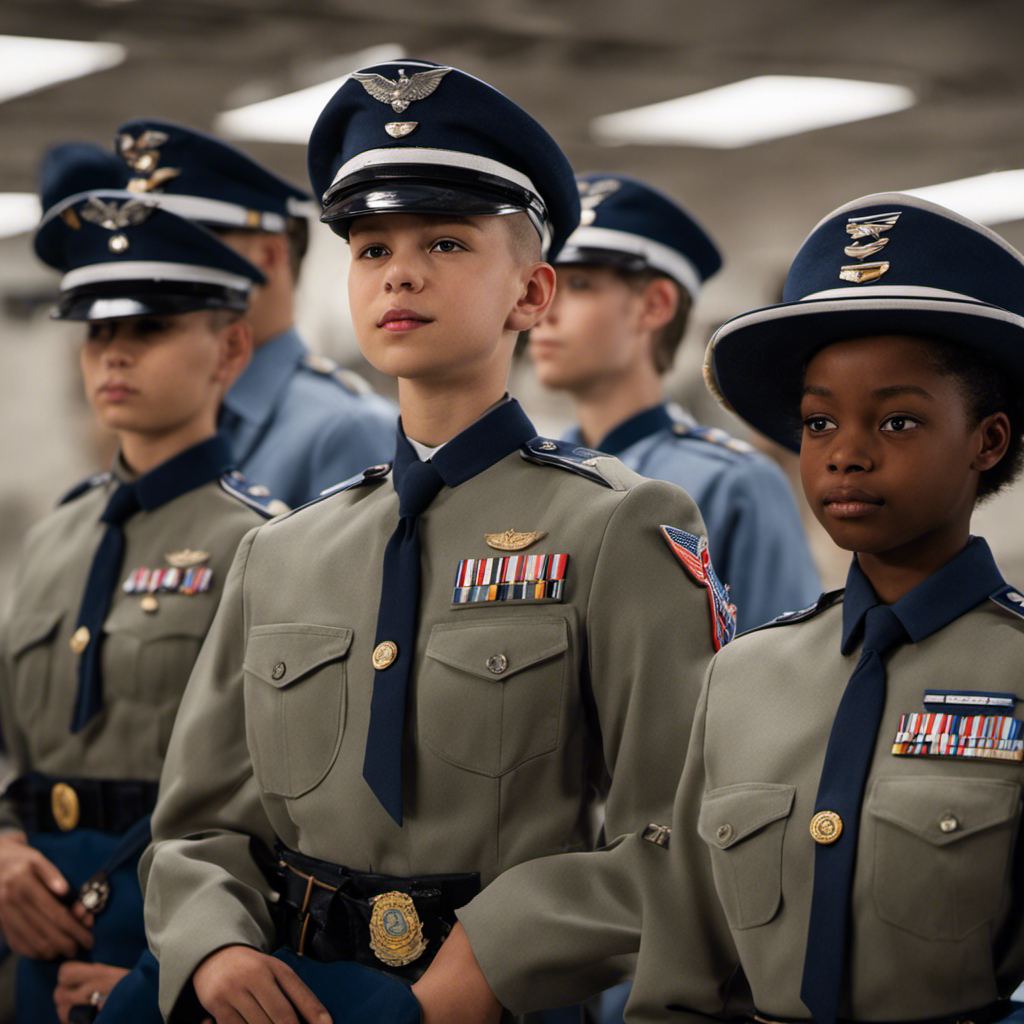
When I first joined the Civil Air Patrol, I wondered, “Will they make me shave my head?” Many people mistakenly believe that all CAP cadets must have a bald head.
In this article, I will explore the importance of appearance in the Civil Air Patrol, the grooming standards that cadets must follow, and whether shaving your head is a requirement or not.
Let’s dive in and discover the truth behind this intriguing question.
Key Takeaways
- Maintaining a well-groomed appearance is crucial in the Civil Air Patrol.
- Personal grooming requirements include specific guidelines for hair length and style.
- Exceptions to the shaving rule may be granted for medical or cultural reasons.
- Adhering to appearance standards can positively impact leadership opportunities and embrace cultural diversity within the organization.
The Importance of Appearance in Civil Air Patrol
When joining Civil Air Patrol, they’ll expect you to maintain a well-groomed appearance. Hair grooming and personal presentation play a crucial role in the organization. As a member, it is important to present yourself in a professional manner.
This means keeping your hair neat, clean, and within regulations. Male cadets are required to have a conservative hairstyle that does not touch the ears or collar and is tapered at the back. Female cadets have more flexibility, but their hair must be styled in a way that does not interfere with wearing the uniform.
Additionally, overall personal presentation is important, including wearing the uniform correctly, maintaining good hygiene, and having a respectful and confident demeanor. Adhering to these standards not only reflects positively on yourself but also on the Civil Air Patrol as a whole.
Understanding the Grooming Standards
To understand the grooming standards, make sure to familiarize yourself with the regulations in place.
The Civil Air Patrol has specific guidelines regarding personal hygiene and appearance. These standards are put in place to ensure a professional and disciplined image is maintained.
Personal hygiene is of utmost importance and includes regular bathing, clean and trimmed nails, and good oral hygiene.
The regulations also address facial hair, stating that it should be neatly trimmed and not extend beyond the upper lip or below the lower edge of the natural jawbone line.
Additionally, hairstyles should be neat and conservative. The goal is to present a clean and polished appearance that reflects the values and professionalism of the Civil Air Patrol.
Hair Regulations for CAP Cadets
The regulations for CAP cadets’ hair state that it should be neat and well-groomed. There are specific hair length policies that must be followed, ensuring a professional appearance while in uniform. Here are three key points to understand about hair regulations for CAP cadets:
-
Hair length: Hair should not extend below the bottom edge of the collar, and it should be evenly distributed with no excessive bulk or length on the top of the head.
-
Hair styling options: Cadets have several options for styling their hair within the regulations. They can choose to wear it in a neat and conservative manner, such as a short and tapered cut, or they can opt for longer hairstyles as long as they are kept groomed and within the specified length limits.
-
Personal grooming: In addition to hair length, CAP cadets are expected to maintain overall personal grooming standards. This includes clean and well-kept hair, free from excessive grease or styling products, and a clean-shaven face for male cadets, unless granted an exception for religious or medical reasons.
Overall, adhering to the hair regulations ensures a professional and uniform appearance for CAP cadets, promoting discipline and attention to detail.
Personal Hygiene Expectations
When it comes to personal grooming in the Civil Air Patrol, there are specific requirements that members must adhere to.
One key aspect is hair length, which has certain guidelines depending on gender and specific roles within the organization.
Additionally, there are grooming standards that apply to all members, ensuring a neat and professional appearance.
Hair Length Requirements
Your hair can be no longer than 2 inches in bulk, according to the hair length requirements in Civil Air Patrol. This rule ensures that your hair is neat and professional-looking while adhering to the standards set by the organization.
However, there are certain exemptions to this rule. For medical or religious reasons, individuals may be granted permission to have longer hair. If you fall into this category, you should reach out to your unit commander and provide the necessary documentation to support your exemption request.
It’s important to note that even with an exemption, you still need to maintain a tidy appearance. Regular grooming is essential, and you should follow the guidelines provided by Civil Air Patrol for hair care and styling.
Grooming Standards for Members
Moving on from hair length requirements, let’s discuss the grooming standards for members in the Civil Air Patrol.
Maintaining a neat and uniform appearance is an important aspect of being part of this organization. While specific guidelines may vary slightly between units, there are general expectations for hair grooming.
Male members are typically required to keep their hair neatly trimmed, not extending below the top of the collar. Facial hair is generally allowed, but it must be well-groomed and not excessive.
Female members are expected to style their hair in a manner that is both professional and manageable.
Overall, the goal is to present a unified and professional image as members of the Civil Air Patrol. These grooming standards contribute to the overall discipline and uniformity within the organization.
Exceptions to the Shaving Rule
When it comes to the shaving rule in the Civil Air Patrol, there are exceptions that allow individuals to maintain their hair length.
These exceptions are typically granted for medical or cultural reasons.
Medical exemptions may be given to individuals with certain skin conditions or other medical issues that make shaving difficult or uncomfortable.
Cultural exemptions, on the other hand, may be granted to individuals whose religious or cultural beliefs require them to keep their hair longer.
Medical or Cultural Exemptions
If you have any medical or cultural exemptions, you can discuss them with a Civil Air Patrol representative when joining.
The Civil Air Patrol understands that there may be certain circumstances where individuals may need to be exempt from the shaving rule due to medical reasons. These medical exemptions could include conditions such as skin sensitivity, allergies, or dermatological issues.
Additionally, cultural exemptions may be granted to individuals who have religious or cultural beliefs that prohibit them from shaving their heads. The Civil Air Patrol values diversity and respects different cultural practices, so they are willing to work with individuals to find a suitable solution that adheres to their beliefs while still maintaining the professionalism and discipline required in the organization.
Hair Length Allowances
To maintain a professional appearance, you can keep your hair neatly groomed within the specified length allowances.
When it comes to hair length restrictions in organizations like Civil Air Patrol (CAP), there are some grooming expectations that need to be followed. CAP regulations state that for males, the hair should not touch the top of the ears, extend beyond the eyebrows, or touch the collar. This means that hair should be kept short and well-maintained.
Females, on the other hand, have more flexibility in terms of hair length, as long as it is neatly styled and doesn’t interfere with the proper wearing of the uniform.
It is important to adhere to these guidelines to uphold a professional appearance and ensure uniformity within the organization.
Tips for Maintaining a Professional Appearance
Maintaining a professional appearance in Civil Air Patrol includes keeping your hair neatly groomed, but shaving your head is not required. It is important to present yourself in a neat and tidy manner to reflect the professionalism of the organization. Here are some tips for maintaining a professional appearance:
-
Grooming: Keep your hair clean, well-trimmed, and styled in a way that does not obstruct vision or safety equipment.
-
Uniform: Wear your uniform properly, ensuring it is clean, pressed, and fits correctly. Pay attention to details such as buttoning all buttons and wearing the appropriate insignia.
-
Accessories: Keep accessories to a minimum and ensure they are in line with CAP regulations. Avoid wearing excessive jewelry or flashy items that may distract from your professional image.
Dealing With Hair Length as a CAP Member
When it comes to your hair length as a CAP member, make sure it adheres to the grooming standards while still reflecting your personal style.
Dealing with cultural diversity within the Civil Air Patrol means respecting and embracing the differences among members, including their hairstyles.
The CAP has specific guidelines for hair length, which aim to maintain a professional appearance while accommodating diverse cultural backgrounds. It’s important to remember that personal style can still be expressed within these guidelines.
Whether you prefer long hair, short hair, or something in between, as long as it meets the grooming standards, you can maintain your personal style.
Embracing cultural diversity means understanding and appreciating the various ways people choose to express themselves through their hair, while still maintaining a professional image as a CAP member.
The Impact of Appearance on CAP Leadership Opportunities
The impact of appearance on CAP leadership opportunities can be significant, as it can influence how others perceive your professionalism and ability to lead. When it comes to leadership opportunities in the Civil Air Patrol (CAP), adhering to appearance standards is crucial. Here are three ways appearance can affect your chances of leadership roles:
-
First impressions: When meeting new people, their initial judgment is often based on appearance. If you present yourself in a neat and professional manner, it can create a positive impression and enhance your leadership potential.
-
Perception of professionalism: Maintaining a clean and well-groomed appearance demonstrates your commitment to professionalism. It shows that you take your role seriously and can inspire confidence in those who may consider you for leadership positions.
-
Role model for others: As a leader, you are responsible for setting an example for others to follow. By adhering to appearance standards, you show your dedication to the values and expectations of the CAP, which can inspire others to do the same.
Frequently Asked Questions
Are There Any Exceptions to the Hair Regulations for CAP Cadets?
Yes, there are exceptions to the hair regulations for CAP cadets. It’s important to note that the CAP grooming standards allow for reasonable accommodations based on religious beliefs, medical conditions, or other unique circumstances.
Can I Have a Hairstyle That Is Not Mentioned in the Grooming Standards?
When joining Civil Air Patrol, the grooming standards specify acceptable hairstyles. While there may be some variation in individual interpretation, it is important to maintain good hair hygiene and adhere to the guidelines provided.
How Often Do I Need to Maintain Personal Hygiene as a CAP Cadet?
As a CAP cadet, maintaining personal hygiene is important. We are expected to adhere to grooming standards, but there may be exceptions for certain hairstyles. Regularly taking care of ourselves is essential for a professional appearance.
Are There Any Specific Guidelines for Facial Hair for CAP Members?
When it comes to facial hair guidelines for CAP members, there are specific regulations in place. Exceptions to hair regulations may be granted, but overall, maintaining a clean and professional appearance is expected.
Can I Still Be Considered for Leadership Opportunities if I Don’t Meet the Grooming Standards?
Yes, you can still advance in CAP without meeting grooming standards. However, it is important to note that grooming standards are in place for a reason and may affect your eligibility for certain leadership opportunities.
Conclusion
In conclusion, while joining Civil Air Patrol doesn’t require shaving one’s head, the importance of appearance shouldn’t be underestimated. Grooming standards and regulations are in place to ensure a professional and disciplined environment. Personal hygiene expectations are also emphasized, reflecting the organization’s commitment to excellence.
However, there are exceptions to the shaving rule, allowing individuals to maintain their hair length within reasonable limits. Overall, maintaining a professional appearance not only contributes to the overall image of the CAP but also opens doors to leadership opportunities, allowing individuals to soar to new heights.
Atlas – Editor in Chief: The guiding force of Head Shave Products, Atlas steers the ship with a steady hand and a keen eye for detail. His vast experience in the shaving industry combined with his leadership skills makes him the linchpin of our operations. Beyond his professional duties, Atlas serves as a mentor, sharing his wisdom and insights with the rest of the team.
-

 Guides and Tutorials3 months ago
Guides and Tutorials3 months agoHow to Shave Head at Home
-

 Community and Stories2 months ago
Community and Stories2 months agoWhy Did Britney Shave Her Head
-

 Guides and Tutorials3 months ago
Guides and Tutorials3 months agoHow to Shave Half Your Head at Home
-

 Community and Stories2 months ago
Community and Stories2 months agoWhy Did Daph Shave Her Head
-

 Community and Stories3 months ago
Community and Stories3 months agoWhy Did Amanda Geise Shave Head
-

 Community and Stories2 months ago
Community and Stories2 months agoWhy Did Pat Shave His Head
-

 Community and Stories2 months ago
Community and Stories2 months agoWhy Did Bloodynine Shave His Head
-

 Community and Stories3 weeks ago
Community and Stories3 weeks agoWhy Did Porter on Ghost Asylum Shave His Head








